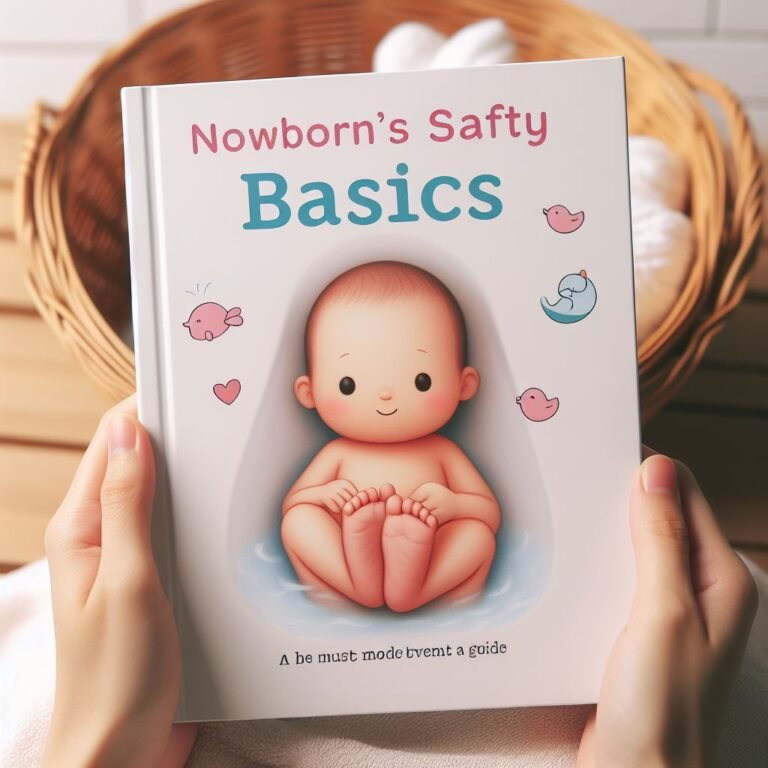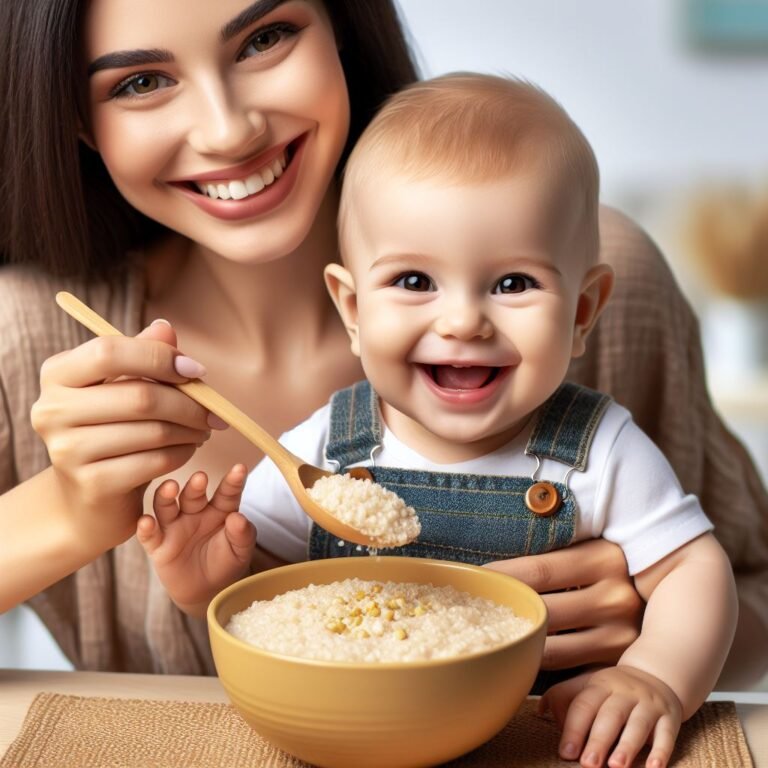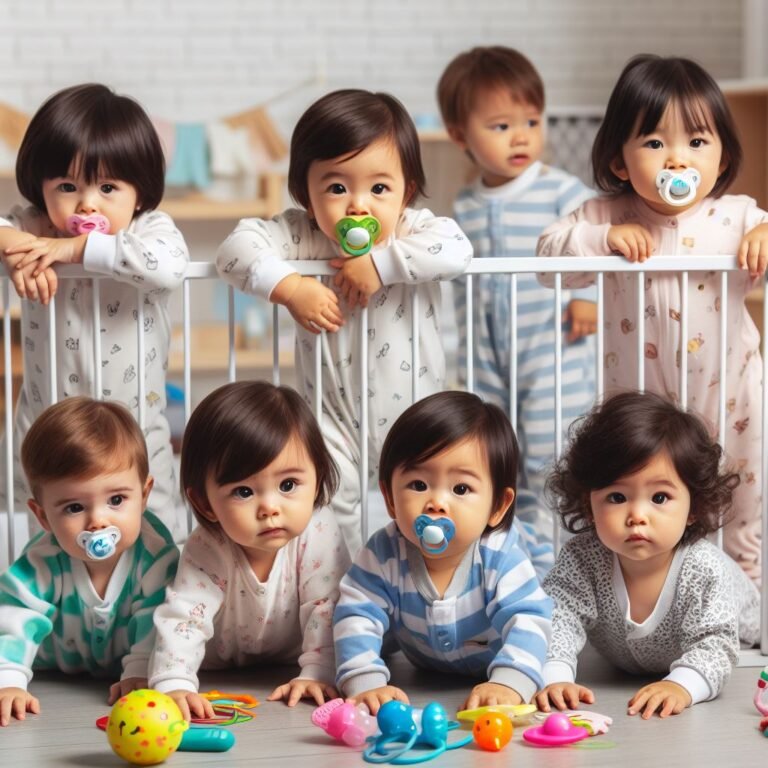Infant Safety : A Nurse Is Teaching a Prenatal Class About Infant Safety
In the bustling room of a prenatal class, a nurse takes center stage, her voice gentle yet authoritative. As expectant parents listen intently, she paints vivid images of the joys and challenges that lie ahead.
Through her expertise, she imparts essential knowledge on infant safety, guiding them towards creating a secure environment for their newborns.
This article explores the invaluable lessons shared by this dedicated nurse, ensuring that every parent is equipped to protect and nurture their precious bundle of joy.
Key Takeaways
- Safe sleep practices include placing infants on their backs to sleep and using cribs or bassinets that meet safety standards
- Baby-proofing the home is important to prevent common infant injuries, such as falls and choking hazards
- Navigating car seat infant safety involves choosing the right car seat for your child’s age and weight, installing it correctly, and regularly inspecting it for signs of wear and tear
- Creating a safe environment for your newborn includes baby-proofing the home, maintaining a smoke-free environment, practicing safe sleep guidelines, and ensuring proper car seat safety.
The Importance of Safe Sleep Practices
One of the most crucial aspects of infant safety is the implementation of safe sleep practices. Ensuring that infants have a safe and secure sleep environment is vital for their overall well-being and development. As healthcare professionals dedicated to serving others, it is our responsibility to educate parents and caregivers about the importance of safe sleep practices.
Safe sleep practices include placing infants on their backs to sleep in a crib or bassinet that meets infant safety standards. It is essential to avoid placing any soft bedding, pillows, or stuffed animals in the crib, as these items can pose a suffocation risk. Additionally, it is important to create a smoke-free environment and maintain a moderate room temperature to prevent overheating.
Baby-Proofing Your Home: Essential Tips and Tricks
When it comes to ensuring the infant safety of your newborn at home, it is essential to implement effective baby-proofing measures. Baby-proofing your home is crucial to creating a safe environment for your baby to explore and grow.
As a nurse teaching a prenatal class on infant safety, I understand the importance of providing practical tips and tricks to help parents in this process.
First and foremost, it is important to secure all electrical outlets and cords. Use outlet covers or plug protectors to prevent your curious little one from sticking their fingers or objects into the outlets. Additionally, keep cords out of reach or use cord organizers to prevent them from becoming a choking hazard.

Another area of concern is furniture and heavy objects. Make sure to anchor bookshelves, TV stands, and other furniture to the wall to prevent them from tipping over. Use furniture straps or brackets to secure them properly. Place corner protectors on the sharp edges of tables and furniture to prevent injuries if your baby bumps into them.
In the kitchen, install infant safety locks on cabinets and drawers to keep hazardous items like cleaning supplies, sharp knives, and small objects out of reach. Install safety gates at the top and bottom of stairs to prevent falls and accidents.
Lastly, ensure that your baby’s crib and other sleep areas are safe by following safe sleep guidelines, which were discussed in the previous subtopic.
Navigating Car Seat Safety: What Every Parent Should Know
Car seat safety is a critical aspect that every parent should be knowledgeable about when it comes to ensuring the well-being of their infant during car travel. Properly securing your baby in a car seat is essential to protect them from potential injuries in the event of a car accident. As a parent, it is your responsibility to ensure that the car seat is installed correctly and that your baby is properly buckled up every time you hit the road.
First and foremost, it is important to choose the right car seat for your child’s age and weight. There are different types of car seats available, including rear-facing infant seats, convertible seats, and booster seats. Understanding which one is appropriate for your child’s stage of development is crucial.
Once you have selected the right car seat, it is important to install it correctly in your vehicle. Follow the manufacturer’s instructions carefully, and make sure the seat is securely fastened. It is also important to check for any recalls or infant safety notices related to your car seat model.
Furthermore, proper positioning is key to ensuring your infant’s safety. When placing your baby in the car seat, make sure the harness straps are snug and secure. The chest clip should be positioned at armpit level to keep the straps in place.
Regularly inspect your car seat for any signs of wear and tear. Replace it if it is damaged or has been involved in a car accident. Additionally, keep in mind that car seats have an expiration date, typically around six years. It is important to replace the seat once it has reached its expiration.
Preventing Common Infant Injuries: A Comprehensive Guide
To effectively prevent common infant injuries, it is important for parents to be aware of potential hazards and take proactive measures to ensure their child’s safety. Infants are curious and vulnerable, and it is crucial for parents to create a safe environment for them to explore and grow. This comprehensive guide aims to provide parents with the knowledge and tools necessary to prevent common infant injuries.
One of the most common injuries among infants is falling. To prevent falls, parents should ensure that their homes are baby-proofed, with safety gates installed at the top and bottom of stairs, windows secured, and furniture anchored. It is also important to never leave an infant unattended on elevated surfaces such as changing tables or beds.
Another significant concern is choking hazards. Parents should be vigilant in keeping small objects out of reach of their infants and be aware of foods that pose choking risks, such as grapes, hot dogs, and nuts. It is crucial to cut food into small, manageable pieces and supervise mealtime to prevent choking incidents.
Burns are another common injury among infants. Parents should always test the temperature of bathwater and bottle formula to ensure they are not too hot. Additionally, keeping hot liquids and objects out of reach and using stove guards can help prevent burns in the kitchen.
Lastly, suffocation is a serious risk for infants. Parents should ensure that their infants sleep on their backs in a crib with a firm mattress and no loose bedding or soft toys. It is important to create a safe sleep environment by avoiding crib bumpers, pillows, and heavy blankets.
Creating a Safe Environment for Your Newborn: Must-Know Tips and Advice
Implementing five essential safety measures in your home can help create a secure environment for your newborn. As caregivers, it is our responsibility to prioritize the safety and well-being of our precious little ones. By following these must-know tips and advice, you can ensure that your home is a safe haven for your newborn.
First and foremost, it is crucial to baby-proof your home. This includes securing cabinets and drawers, covering electrical outlets, and installing safety gates to prevent access to stairs and other hazardous areas. Additionally, ensure that all furniture is securely anchored to the wall to avoid tipping accidents.
Secondly, maintain a smoke-free environment. Smoking poses significant health risks for infants, including respiratory problems and Sudden Infant Death Syndrome (SIDS). It is essential to create a smoke-free zone inside your home and discourage smoking in the vicinity of your baby.
Next, create a safe sleep environment. Place your newborn on their back in a crib that meets infant safety standards, with a firm mattress and fitted sheet. Avoid placing pillows, blankets, stuffed animals, or any other soft objects in the crib, as these can pose suffocation hazards.
Furthermore, practice proper car seat safety. Always use a rear-facing car seat, and ensure that it is securely installed in the back seat of your vehicle. Follow the manufacturer’s guidelines for height and weight limits, and never leave your baby unattended in a car seat.
Lastly, be cautious with household chemicals and medications. Keep all cleaning products, medications, and potentially toxic substances out of reach and securely locked away. It is also advisable to have the Poison Control hotline number readily available in case of an emergency.
Frequently Asked Questions
What Are the Common Signs of Postpartum Depression and How Can It Affect Infant Safety?
Postpartum depression is a common condition that can affect new mothers. It is important to recognize the signs, such as sadness, loss of interest, and fatigue, as it can impact infant safety through impaired bonding and caregiving abilities.
How Can I Prevent Sudden Infant Death Syndrome (Sids) and What Are the Risk Factors Associated With It?
To prevent Sudden Infant Death Syndrome (SIDS), it is important to ensure a safe sleep environment for infants. Risk factors associated with SIDS include smoking during pregnancy, overheating, and placing infants to sleep on their stomachs.
Are There Any Specific Guidelines or Recommendations for Safe Sleeping Arrangements for Twins or Multiple Infants?
Safe sleeping arrangements for twins or multiple infants require separate sleep surfaces, such as individual cribs or bassinets, to reduce the risk of suffocation or SIDS. Follow guidelines from the American Academy of Pediatrics for safe sleep practices.
Can You Provide Some Tips for Safely Introducing Solid Foods to My Baby and Preventing Choking Hazards?
When introducing solid foods to babies, it is important to prioritize safety and prevent choking hazards. Some tips include starting with single-ingredient purees, avoiding small, hard foods, and always supervising the baby during mealtime.
What Are the Recommended Temperature Ranges for Bathing and Dressing a Newborn to Ensure Their Safety and Comfort?
When teaching a prenatal class about infant safety, it is important to discuss recommended temperature ranges for bathing and dressing a newborn. This ensures their safety and comfort, promoting a positive caregiving experience.
Conclusion
In conclusion, it is crucial for parents to prioritize infant safety. This can be achieved by practicing safe sleep practices, baby-proofing their homes, ensuring car seat safety, and preventing common infant injuries.
By creating a safe environment for their newborn, parents can provide a foundation for their child’s well-being and development. As the saying goes, “An ounce of prevention is worth a pound of cure,” and taking proactive steps to keep infants safe can prevent accidents and promote a healthy start in life.






